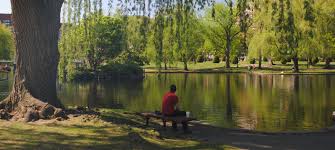
The Case Against Tilling
For years, farmers and gardeners have turned to tilling as a way to aerate the soil and prepare it for planting. But is tilling really necessary? Are there any downsides to this practice? Let’s take a closer look at tilling and see if it’s really worth all the fuss.
The Pros of Tilling
There are some benefits to tilling the soil. Tilling can help break up compacted soil, making it easier for roots to penetrate. It can also help to control weeds by uprooting them and burying their seeds deep underground where they can’t germinate. In addition, tilling can help to aerate the soil, making it more receptive to water and nutrients.
The Cons of Tilling
However, there are also some drawbacks to tilling. One of the biggest problems with tilling is that it can destroy the delicate balance of microbes in the soil. These microbes are essential for breaking down organic matter and making nutrients available to plants. In addition, tilling can cause erosion, particularly on sloped land. And finally, tilling can actually create more work for you in the long run by encouraging weed growth.
So, should you till your garden or not? The answer isn’t always clear-cut. There are pros and cons to both sides of the argument. Ultimately, you’ll need to weigh the pros and cons for yourself and decide what’s best for your garden.
When should you not till the garden? So in general, you want to maintain a balance and don’t want to till the soil too often. If the soil structure looks good, there isn’t any compacted soil, and there aren’t any weeds/competing plants, you should be fine without tilling or with minimal aeration.
Is it better to till a garden in the fall or spring? We recommend tilling your vegetable garden in the early fall, when the soil is warm. Jobs like tilling the soil and weeding can be far easier in the fall than in the spring, when the earth is still pliant to work with. It also makes it a far more pleasant task for the gardener!
Why you should not till your garden? Tilling simply isn’t playing the long game. It provides immediate fertility, but it destroys the soil life, the source of long-term fertility. It also opens up avenues for wind and water erosion, which takes away quality topsoil and eventually leaves growers with only infertile subsoil to work with.
Can you plant immediately after tilling? Wait two to three weeks after tilling before planting seeds or seedlings. This gives helpful microorganisms disrupted by the tilling time to reestablish and begin developing nutrients in the soil.